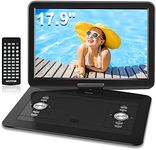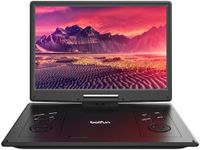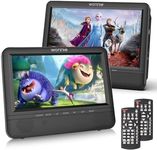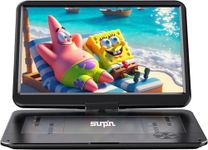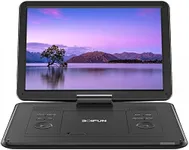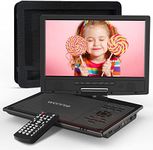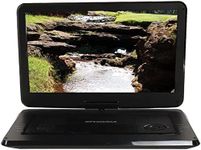Buying Guide for the Best Portable Dvd Players
Choosing a portable DVD player can make travel, long commutes, or downtime much more enjoyable by letting you watch your favorite movies or shows anywhere. To find the best fit for your needs, it's important to understand the main features and how they impact your experience. Think about where and how you'll use the player most often, such as in the car, on a plane, or at home, and let those needs guide your decision.Screen SizeScreen size refers to the diagonal measurement of the display, usually in inches. This is important because it affects how comfortable and enjoyable it is to watch videos, especially for longer periods. Smaller screens (around 7-9 inches) make the player more compact and easier to carry, which is great for solo travelers or kids. Medium screens (10-12 inches) offer a balance between portability and viewing comfort, suitable for most users. Larger screens (13 inches and above) provide a more immersive experience but can make the device bulkier. Choose a screen size based on how portable you need the player to be and how many people will be watching at once.
Battery LifeBattery life tells you how long the player can run on a single charge, which is crucial if you plan to use it away from power outlets. Shorter battery life (2-3 hours) may be enough for short trips or single movies, while medium battery life (4-5 hours) is better for longer journeys or multiple episodes. Extended battery life (6 hours or more) is ideal for all-day use or long flights. Think about your typical usage—if you often travel or spend time away from charging options, prioritize longer battery life.
Supported FormatsSupported formats indicate which types of discs and files the player can read, such as DVD, CD, MP3, JPEG, or video files like AVI and MP4. This matters because it determines what content you can play. Basic players may only handle standard DVDs and CDs, while more versatile models can play a variety of video and audio files from USB drives or SD cards. If you have a diverse collection of media or want to play digital files, look for a player with broad format support.
Portability and WeightPortability and weight refer to how easy it is to carry the player around. Lighter and more compact models are easier to pack and hold, making them ideal for travel or use by children. Heavier or larger players may offer bigger screens or more features but can be less convenient to transport. Consider how often you'll be carrying the player and whether you'll need to fit it into a bag or use it on the go.
Connectivity OptionsConnectivity options include the types of ports and wireless features available, such as USB, SD card slots, headphone jacks, AV outputs, or even Bluetooth. These options are important if you want to play media from different sources, connect to a TV, or use headphones for private listening. If you plan to use the player in various settings or with different devices, look for a model with the connections you need.
Durability and Build QualityDurability and build quality refer to how sturdy and well-made the player is. This is especially important if the device will be used by children or taken on the road frequently. More robust models can withstand bumps and drops better, while cheaper or flimsier ones may break more easily. If you expect rough handling or frequent travel, prioritize a player with solid construction.
Ease of UseEase of use covers how simple the player is to operate, including the layout of buttons, menu navigation, and remote control. A user-friendly player makes it easier for everyone, including kids and seniors, to enjoy movies without frustration. If you want a hassle-free experience, look for clear controls and straightforward menus.


